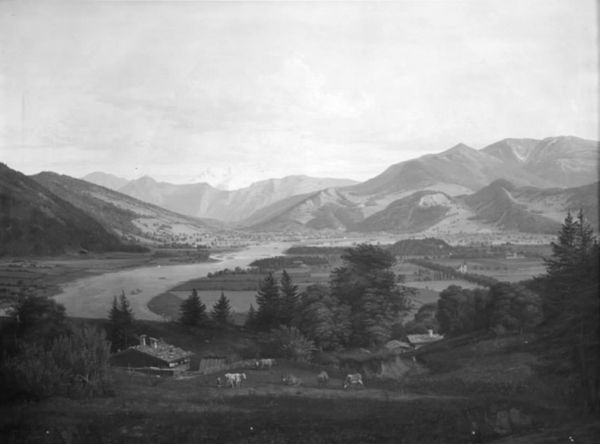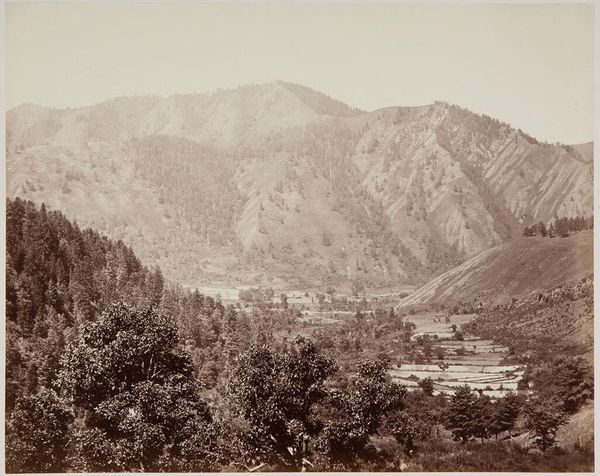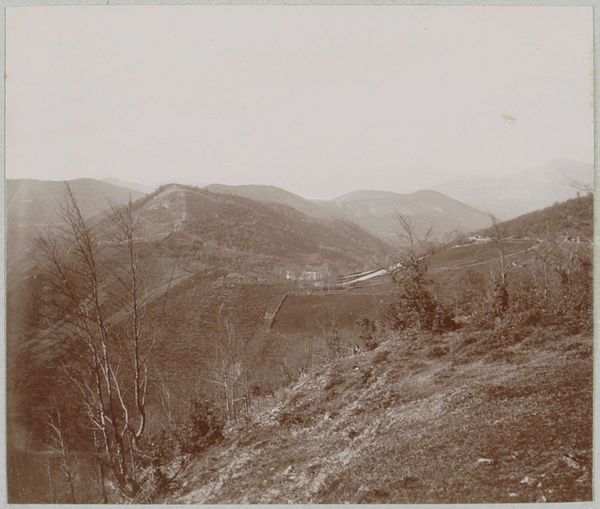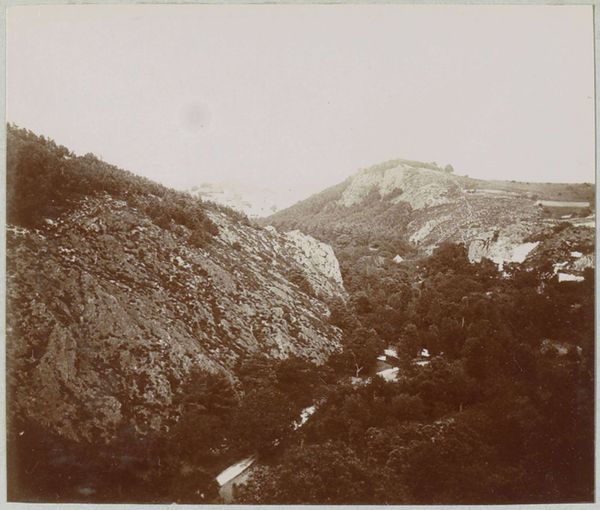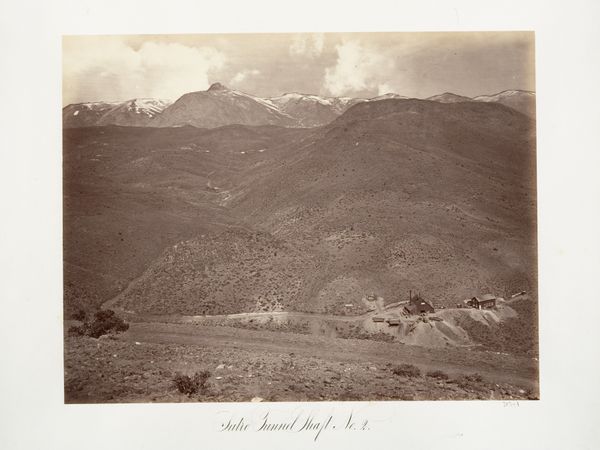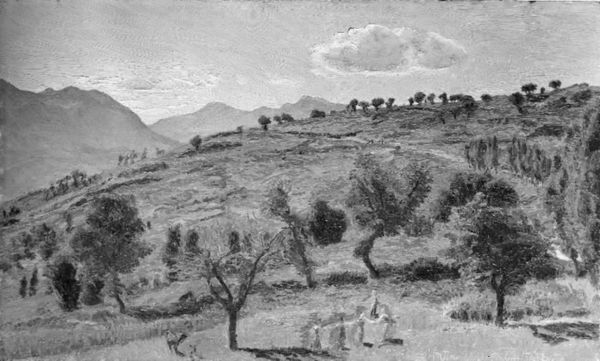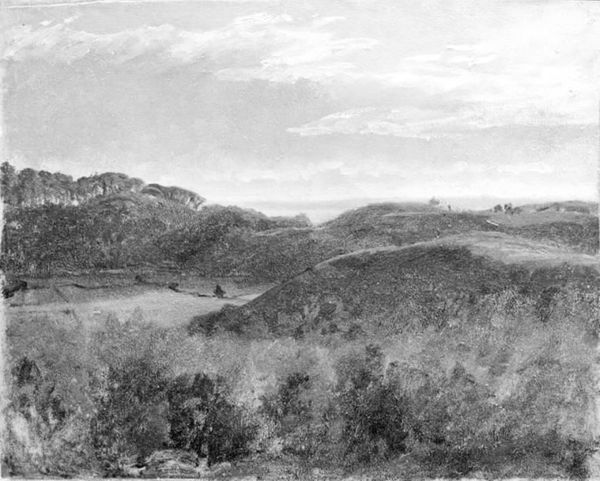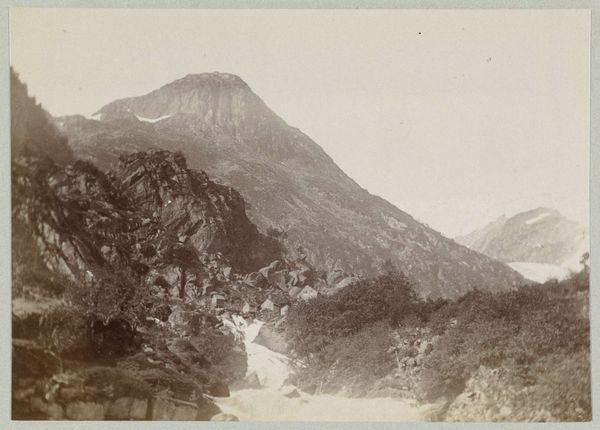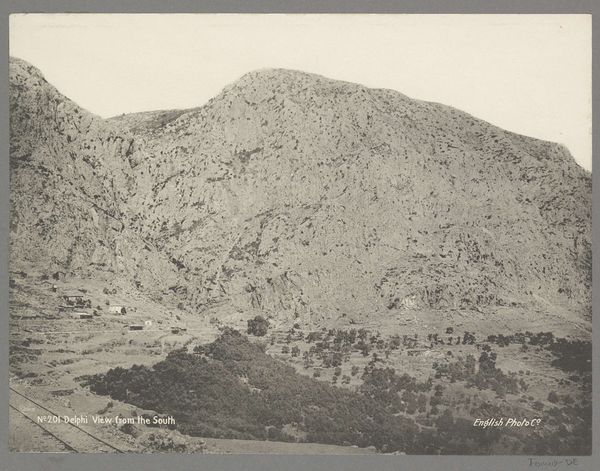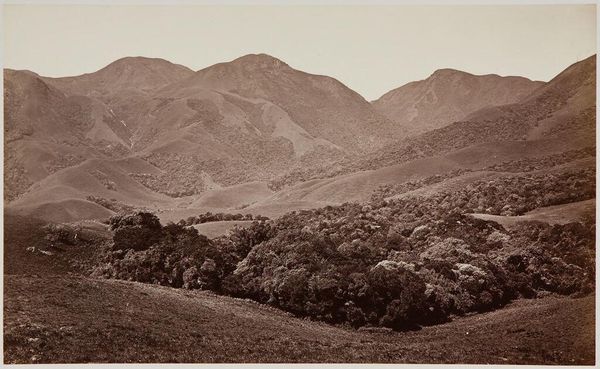
View Towards the Mammell Mountains (Monti Ruffi) near Olevano 1836
0:00
0:00
painting, plein-air, oil-paint, paper
#
painting
#
plein-air
#
oil-paint
#
landscape
#
paper
#
nature
#
romanticism
#
history-painting
#
realism
Dimensions: 26 cm (height) x 45.5 cm (width) (Netto), 39.6 cm (height) x 57.7 cm (width) x 7.4 cm (depth) (Brutto)
Curator: This is Ernst Meyer's "View Towards the Mammell Mountains (Monti Ruffi) near Olevano," an oil on paper, made en plein-air in 1836. Editor: It has a serene, almost melancholic quality to it. The landscape seems both imposing and inviting. Curator: Absolutely, Meyer's composition evokes that Romantic fascination with the sublime power and beauty of nature. The twin peaks themselves could symbolize duality, perhaps mirroring the balance and tensions within the human spirit. Editor: Interesting perspective. I immediately think of the historical context: the appeal of the Italian countryside to artists seeking refuge from the industrializing North. It speaks to a yearning for a simpler, perhaps idealized, existence. This landscape tradition romanticized an ideal. Curator: Very true. Landscapes like this created and reinforced visual tropes around authenticity. It also connects to the Grand Tour, that traditional journey that cemented one's classical education. Seeing Rome through a Romantic lens became performative, a vital cultural signal. Editor: How fascinating that you see it that way, particularly within the frame of continuity. One could consider who *didn't* have access to those experiences, too. I see the legacy of these artistic traditions perpetuated to this day through cultural lenses of social mobility. Curator: A keen observation. Meyer's image is less about capturing a specific place and more about presenting an experience of nature loaded with symbolism. It taps into deeply rooted archetypes of landscape, place, and feeling. The very presence of the mountains anchors something stable for both the artist, and us, perhaps a search for the eternal. Editor: Perhaps the most vital function of this landscape painting is in how we can access our critical perspectives of romanticization. How do idyllic scenes influence the material reality of rural labor? How can paintings create not just art history but social and political consequences? Curator: That’s powerful, the enduring capacity for even seemingly tranquil scenes to prompt profound dialogues about power, memory, and identity. Editor: Indeed, a reminder that our responses to art are always a conversation between past and present.
Comments
No comments
Be the first to comment and join the conversation on the ultimate creative platform.
